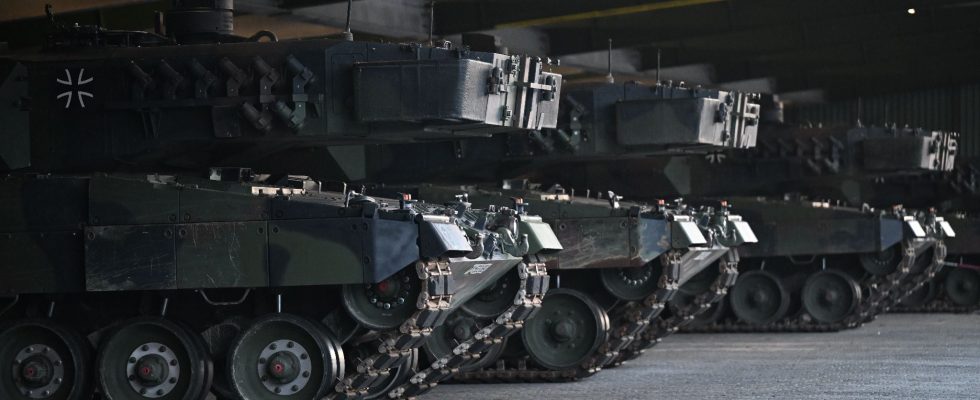All that remains is to share the work. The German and French Defense Ministers met this Friday, April 26, in Paris to ratify the distribution of tasks between manufacturers from the two countries on the joint project for the tank of the future, the MGCS. Long immersed in the limbo of rivalries between industrialists and the difficulties of States in agreeing on their military needs, the MGCS program (English acronym for “Main Land Combat System”) is emblematic of defense cooperation between Paris and Berlin, just like the combat aircraft of the future (Scaf), launched at the same time in 2017. After a series of difficulties, it is time to get the project back on track.
When we no longer believed it, Boris Pistorius and Sébastien Lecornu took the issue head on last summer. They managed to agree on the needs of the two countries and signed a memorandum of understanding setting in stone the distribution of the workload 50-50 between manufacturers. Financed equally by Paris and Berlin and carried out under German direction, this program, originally led by KNDS, an entity created for the occasion between the French Nexter – manufacturer of the Leclerc tank -, and the German KMW – which manufactures the Leopard 2 -, saw the emergence in 2019 of the German manufacturer Rheinmetall. And this destabilized the structure and the distributions envisaged between industrialists.
The MGCS must replace the French Leclerc and German Leopard by 2040, compared to 2035 at the launch of the project. The agreement, concluded after tough negotiations, also defines eight pillars between the two partners. “It is not a question of knowing whether we are developing a Leopard 3 or a Leclerc 2.0, but of something completely new,” argued Boris Pistorius in a joint interview with his counterpart at the Frankfurter Allgemeine Zeitung.
Concretely, the MGCS is a combat system in which the land combat vehicles of the French and German armies will be connected. “This device will be connected to satellites so that combat information can be shared by the Air Forces and Navy of partner countries,” assure our colleagues from BFMTV.
“Revolutionary military equipment”
And Sébastien Lecornu weighs his words: the MGS will be “revolutionary military equipment. We are not simply developing the tank of the future, but the future of the tank that we want to imagine together”. The Franco-German project is according to him the most advanced, attacking its neighbors across the Atlantic in the process: “The Americans have still not started to think” about the successor to their Abrams tank and the Russians “suffered failures” with their tank T-14 Armata. It will include significant technological “breakthroughs”, he explained last month, referring to the use of artificial intelligence, drones to protect the tank or the incorporation of so-called directed effect weapons, such as lasers. , or electronic warfare systems.
The first pillar concerns the development and production of the different platforms of the system. Because more than a traditional tank, the MGCS is a “system of systems”, a tank itself accompanied by other vehicles, manned or not. A second pillar concerns “conventional fires”, that is to say the responsibility for the gun, KNDS-France (formerly Nexter) promoting its 140 mm gun when Rheinmetall pushes its 130 mm. A third concerns “innovative fires”, missiles and directed weapons that can be fired from a vehicle other than the tank itself. The other pillars concern communication systems and the combat “cloud”, simulation, sensors, tank protection and finally “the infrastructures which will be necessary to accommodate these platforms”, according to the minister’s office. armies.
This intergovernmental agreement should pave the way for notification of contracts to manufacturers “at the beginning of next year, which is ambitious”, according to Boris Pistorius. This contract will relate to the so-called 1A phase of the design project for a demonstrator, a sort of pre-prototype. This will be manufactured at the turn of the decade. The sums invested to develop the technological bricks during this phase 1A are between “100 and a few hundred million euros”, the technological ambitions not yet being decided on certain subjects, we explain in Paris. Until then, it will be necessary for the manufacturers, KNDS and Rheinmetall, but also a host of other companies from the two countries, to establish the exact distribution of responsibilities and the way of exchanging information, and to set up an organization specific industrial. Note that other countries might want to join the pair. Starting with the Italian Leonardo who shows interest and currently occupies an observer position.
